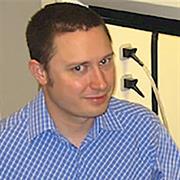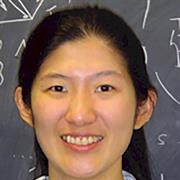Spring: Oct 15
Summer: n/a
Overview
The PhD in Chemistry is primarily a research degree. It is awarded to students who have displayed competence in planning and conducting original research in the field of chemistry, demonstrated a broad familiarity with the science of chemistry, understanding in the application of the scientific method, and gained a thorough knowledge of their field of specialization.
Program Outcomes
In addition to valuable professional skills training and experience in teaching, all graduates of the Chemistry PhD program have led one or more independent research projects while being mentored by faculty at the top of their fields. You will learn how to find, understand, and critically evaluate primary literature, and you will learn how to write, display, and communicate chemical science information for both nonscientific and expert audiences. You'll also learn about other important aspects of research including matters of safety, ethics, integrity, diversity, and inclusion.
Graduates of the Chemistry PhD program are well-trained for research careers and have gone on to a wide range of careers in research, as well as careers in healthcare, science-related policy and nonprofit organizations, and science-related business.
Application Requirements
- Application fee
- Resume/CV
- Personal statement: Our admissions process evaluates each applicant holistically. We look for individuals who can demonstrate preparedness for graduate-level chemistry coursework and preparedness for independent research. Preparedness can be demonstrated in a large variety of ways, so your statement is an opportunity for us to learn about you as a scientist and as a person. It may be helpful if you address some of the following questions in your statement. We prefer you address the below questions in a coherent narrative rather than in standalone paragraphs. Please use 11-point font and do not exceed 3 pages.
- Please describe your long-term goals and how a graduate degree in chemistry will help you achieve them.
- If you have participated in a research project (including course-based research), describe how your personal, intellectual, and creative contributions altered the course of the project.
- What research are you interested in pursuing in graduate school? How do the research programs of specific faculty in our program align with your interests?
- Please share any circumstances that affected your academic performance.
- How have you built on your strengths and worked to improve areas of weakness? How have you responded to challenges and critical feedback you have received?
- Please describe how you built, contributed to, and enriched the communities to which you belong.
- Official TOEFL, IELTS, Duolingo English Test scores, if applicable
- Transcripts
- Three letters of recommendation
Note: Applicants do not need the support of a current faculty member to apply to this program.
Tuition and Financial Aid
See Tuition and Financial Aid information for GSAS Programs.
Research at Tufts
Chemistry graduate students at Tufts form a thriving community of researchers that engages in cutting-edge science. Chemistry research at Tufts is highly interdisciplinary, addressing basic questions about how the universe works and how we can use molecular science to improve society. The department's areas of focus include chemical biology, biotechnology, analytical chemistry, surface science, extraplanetary science, catalysis, green energy, inorganic chemistry, organic synthesis, education research, quantum computing, material science, and therapeutics development.
Faculty

Joshua Kritzer

Joshua Kritzer
Research/Areas of Interest: Bioorganic, Biophysical, & Chemical Biology. Peptides and their mimetics can target protein surfaces in ways small molecules rarely do, making peptide libraries attractive for screening for nontraditional modes of action. The Kritzer research group takes advantage of peptide and peptidomimetic libraries to bypass many of the disadvantages of small molecule screening. They also explore how modifications such as substitution of peptide bonds with isosteres, amide N-methylation, and head-to-tail cyclization affect the activities, specificities, and bioavailabilities of functional peptides. By combining powerful techniques from organic synthesis, biophysical chemistry, molecular biology and genetics, they are developing new molecules and new strategies to attack cancer, inflammation, and autoimmune diseases.

Clay Bennett

Clay Bennett
Research/Areas of Interest: Organic Synthesis, Carbohydrate Chemistry, Synthetic Methodology, Bioorganic Chemistry. Complex carbohydrates play critical roles in a number of biological processes including, protein folding, cellular adhesion and signaling. Despite their importance, very little is understood about the molecular basis of their activity. This is largely due to the fact that the only source of pure oligosaccharides is tedious multi-step synthesis, which can take months or even years to compete. Our research is focused on developing methodologies, based on asymmetric catalysis, to streamline complex oligosaccharide synthesis. Ultimately such methods will aid in the rapid and routine preparation of oligosaccharides for biophysical studies and drug discovery.

Kevin Clark

Kevin Clark
Research/Areas of Interest: Analytical Chemistry, Separations, Mass Spectrometry, RNA Modifications, Neuro-analytical Chemistry. Our group is interested in the characterization of RNA modifications in the central nervous system and single cells. These naturally occurring modifications to RNA biopolymers play important roles in regulating protein translation, but little is known about their functions in the brain. We are focused on developing new approaches for chromatographic separations and mass spectrometry measurements of in small-volume samples such that they can be applied for the simultaneous profiling of multiple RNA modifications in single neurons. The Clark Lab is particularly interested in ionic liquid solvents and ion-tagged oligonucleotides as customizable materials for nucleic acid sample preparation that can be leveraged to improve the performance of downstream analysis methods. We combine our analytical methodologies with a powerful neurobiological model, the marine mollusk Aplysia californica, to investigate relationships between the dynamic landscape of RNA modifications and animal behavior, learning and memory, and function of the central nervous system in health and disease.

Luke Davis

Luke Davis
Research/Areas of Interest: I am interested in synthesis and characterization in inorganic and materials chemistry. I am especially interested in fundamental or applied chemistry that has important societal implications. My research laboratory has ongoing projects in several areas: Zero-emissions ironmaking. The synthesis of iron metal from iron ore contributes ca. 4% of global carbon dioxide emissions. I am interested in alternative thermochemical methods, such as the use of ammonia, for making iron from iron oxides. This project has extended to other critical metals also. Thin-film photovoltaics with earth-abundant, sulfide-based absorber layers. Thin-film photovoltaics (solar cells) provide electricity from sunlight with just a few hundred nm of light-absorbing material. We are exploring binary and ternary sulfides as top-cell materials for tandem photovoltaics. Earth-abundant molecular light absorbers and emitters. Molecular light absorbers and emitters are used in photoredox catalysis, dye-sensitized solar cells, and organic light-emitting diodes (OLEDs). We are exploring high-spin complexes of iron and manganese to prepare new molecules that absorb and emit light. I am developing new research programs in other areas: New superconducting materials. Near-room-temperature superconductors have recently been realized in compressed hydrides. I am interested in new hydride compounds that are stable at ambient pressure and might serve as ambient-pressure, ambient-temperature superconductors. Volatile molecules carrying metal-atom equivalents for superconducting wires. Cryogenic superconducting wires enable quantum bits based on Josephson junctions. We are developing new molecules and methods to deposit the electropositive metals that make up these wires from chemical vapors.

Xinqiang Ding

Xinqiang Ding
Research/Areas of Interest: The Ding Group develops and uses computational approaches to solve problems in chemistry and biophysics. We currently focus on the following two areas. 1. Computational drug design. We aim to accelerate drug design by developing fast and accurate methods for computing protein-ligand binding free energy. To do that, we combine ideas and methods from molecular simulations, statistical mechanics and machine learning. 2. Force field development. We aim to develop a transferable and accurate coarse-grained force field for simulating large biophysical systems.

Samuel Kounaves

Samuel Kounaves
Research/Areas of Interest: Planetary Chemical Analysis & Astrobiology - Over the past several decades it has become increasingly clear that there may be multiple worlds in our solar system besides Earth that either once had or may still have environments capable of supporting microbial life as we know it. Our current NASA supported research is focused on two aspects of the search for life in our solar system: 1. In the search for past or present life on Mars, our goal is to understand how biologically-produced molecules (biomarkers) are altered when exposed to solar UV irradiation in the presence of oxychlorines and their intermediate products, and if the resulting "fragmentation" patterns can be used, in conjunction with Molecular Assembly Theory, to identify the original biomarker and thus provide evidence for life on Mars. More > 2. We are developing microfluidic electroanalytical instrumentation, based on the Phoenix Mars lander Wet Chemistry Lab, to determine: (a) the habitability of the subsurface oceans of Saturn's moon Enceladus by analyzing the ejected ice particles collected by transits through the plumes. (b) the chemistry of the oxychlorines (oxidants) in the martian surface materials, both to understand their potential effects on potential microbial life, and their possible health effects on human explorers and habitats on Mars.

Krishna Kumar

Krishna Kumar
Research/Areas of Interest: Bioorganic Chemistry and Chemical Biology The research interests of the Kumar laboratory are centered on the (1) use of chemistry to design molecules to interrogate and illuminate fundamental mechanisms in biology, or be used as therapeutics; and (2) use of biology to "evolve" and "select" molecules that can perform chemistry in non-biological and medicinal settings. These are some questions we are trying to answer: (i) Is it possible to design and mimic natural proteins and other biological macromolecules by use of building blocks that nature does not use – and whether such constructs can be endowed with properties that are not found in biology?; (ii) How did the first enzymes arise in the imagined Darwin's pond – is there a way to recreate this scenario and in the process develop a fundamentally new method to create enzymes?; (iii) Biology uses phase separation, that is, clustering of different compounds in confined locations – a process that is key in orchestrating the daily activities of a cell – can we find methods that can predictably dictate where molecules are located in a given environment and thereby direct the phenotype that is generated?; (iv) Can we rationally design small molecules and peptides that can function against antibiotic resistant bacteria that are threatening the most basic tenet of modern medicine?

Yu-Shan Lin

Yu-Shan Lin
Research/Areas of Interest: Theoretical and Computational Biophysical Chemistry. The YSL Group aims to elucidate the structures and functions of biomolecules by integrating the power of advanced computations with the elegance of chemical theory. Our focus is to develop and apply computational methodology to significant biological problems that are difficult to address experimentally. Two major research projects in the YSL Group are (1) to understand and design cyclic peptides with desired conformations to modulate protein–protein interactions and (2) to elucidate the structural and functional roles of post-translational modifications and non-natural amino acids on protein folding.

Charlie Mace

Charlie Mace
Research/Areas of Interest: Bioanalytical and Materials Chemistry. To solve outstanding problems in global health, the Mace Lab applies a multidisciplinary approach combining aspects of analytical chemistry, materials science, and engineering. The primary goal of the Mace lab is to develop low cost, patient-centric technologies that can improve access to healthcare. To achieve this, the Mace Lab designs devices that improve the self-collection of blood and enable the diagnosis of diseases in resource-limited settings, and they are exploring ways the methods that are developed in the lab can used by others. Their main techniques leverage the properties of paper and other porous materials to integrate function into simple, affordable devices. Unique to laboratories in Chemistry departments, his group specializes in handling human blood and saliva. Technologies developed in the Mace lab have made the leap to clinical sites in Africa, South America, and the US, owing to their network of clinical, academic, and industry collaborators. The Mace Lab has broad expertise in assay development and device prototyping, which they apply to evaluating the efficacy of candidate therapeutics, performing separations that lead to new measurements, and making field-deployable kits for point-of-care testing. They have additional expertise in instrument development, phase separation in systems of polymers, and microfluidics.

Rebecca Scheck

Rebecca Scheck
Research/Areas of Interest: Chemical Biology and Bioorganic Chemistry. The post-translational modification (PTM) of proteins is an essential cellular vocabulary that allows critical information to be communicated within and between cells. The Scheck lab pioneers new chemical biology tools that enable the decoding of PTM networks. We use these methods to unlock previously unattainable information about how PTMs are integrated into signaling networks in living cells. Our focus is on PTMs with unusual mechanisms that make them particularly complicated to study using traditional tools, which typically inhibit or profile specific enzyme activities. We use an integrated mass spectrometry and chemical biology approach to develop new, selective chemistries and chemical methods that can predictably modulate, track, or capture specific PTMs, like glycation, ubiquitination, or phosphate B-elimination. Learning how these signals are interpreted or degraded will provide access to new therapeutic targets for preventing or treating neurodegenerative diseases, bacterial infection, autoimmune disease, cancer, diabetes, and age-related diseases.

Mary Shultz

Mary Shultz
Research/Areas of Interest: Physical Chemistry and Surface Science. The Shultz group applies physics and chemistry to understand the inner workings of hydrogen bonding. Hydrogen bonding plays key roles in environmental, biological, and atmospheric chemistry. Our program has research thrusts in all three directions. We specialize both in devising environments that clearly reveal key interactions and in developing new instrumentation. The most recent focus is on icy surfaces and on clathrate formation. Probing the ice surface begins with a well-prepared single-crystal surface. We have unique capabilities for growing single-crystal ice from the melt and for and preparing any desired ice face. Our clean water efforts are aimed at developing new materials to fill the significant need for safe drinking water. According to the World Health Organization, over one billion people lack safe drinking water. Our program is based on using photo catalysts to capture readily available sunlight to turn pollutants into benign CO2 and water. We developed methods to grow ultra-nano (~2 nm) particles that have well-controlled surface structures and chemistry.

E. Charles Sykes

E. Charles Sykes
Research/Areas of Interest: Physical Chemistry, Surface Science, and Nanoscience. The Sykes group utilizes state of the art scanning probes and surface science instrumentation to study technologically important systems. For example, scanning tunneling microscopy enables visualization of geometric and electronic properties of catalytically relevant metal alloy surfaces at the nanoscale. Using temperature programmed reaction studies of well defined model catalyst surfaces structure-property-activity relationships are drawn. Of particular interest is the addition of individual atoms of a reactive metal to a relatively inert host. In this way reactivity can be tuned, and provided the energetic landscapes are understood, novel bifunctional catalytic systems can be designed with unique properties that include low temperature activation and highly selective chemistry. Newly developed curved single crystal surface are also being used to open up previously inaccessible areas of structure sensitive surface chemistry and chiral surface geometries. In a different thrust, the group has developed various molecular motor systems that are enabling us to study many important fundamental aspects of molecular rotation and translation with unprecedented resolution.

Samuel Thomas

Samuel Thomas
Research/Areas of Interest: Organic Materials Chemistry Our group applies the philosophy of physical organic chemistry to organic materials, in the forms of polymers, crystals and surfaces. Specifically, we investigate new materials that show macroscopic changes in properties upon exposure to external stimuli. Our main focus has been new materials that respond to light, which has a unique combination of characteristics: i) easy control over where light goes and when it goes there (spatiotemporal control), ii) easy control over intensity and energy, and iii) the ability to pass through many solid materials that traditional chemical reagents cannot. Our research has focused in three separate areas. 1. Photochemical control of charge. As interactions between charges dictate much of molecular behavior, controlling charge can yield control over matter. We have developed a series of materials in which light switches the charge-based interactions between polymer chains from attractive. By combining this top-down fabrication approach of with the bottom-up fabrication method of layer-by-layer assembly, we have developed thin films in which photochemical lability is confined to individual nanoscale compartments, yielding photo-delaminated free-standing films and multi-height photolithography. 2. Using functional side chains to control conjugated materials. Conjugated materials hold great promise for applications including solar cells and displays. We have focused on expanding the role of the side-chains of these materials, which occupy up to half of their mass but are typically reserved only for solubility. Early work in our group focused on integrating photolabile side chains for negative conjugated photoresists. This has evolved to using the non-covalent interactions of aromatic side-chains for controlling interactions between molecules, and therefore their material properties, including the use of mechanical force to control luminescence—mechanofluorochromism. 3. Singlet-oxygen responsive materials. Singlet oxygen (1O2) is a critical reactive oxygen species in photodynamic therapy for cancer as well as in damage to plants upon overexposure to light. Its photochemical production is also chemically amplified through a photochemical reaction, which is the lynchpin of several commercial bioanalytical technologies. Through a combination of fundamental physical organic chemistry and materials chemistry, we have luminescent conjugated polymer nanoparticles as probes for 1O2 in water that shows improved limit of detection over the commercially available luminescent probe for 1O2.

Arthur Utz

Arthur Utz
Research/Areas of Interest: Physical and Surface Chemistry. The Utz group studies how molecules react on surfaces. Reactions at the gas-surface interface are highly dynamical events. Large-scale atomic and vibrational motions transform reactants into products on sub-ps and Å scales. The experiments probe ultrafast nuclear motion and energy flow dynamics that underlie heterogeneous catalysis and chemical vapor deposition. The goal is to to better model existing processes and direct the rational design of new catalytic materials and deposition techniques. The experiments use vibrational- and rotational-state selective laser excitation of molecules in a supersonic molecular beam to provide precise control over the energetics and orientation of the gas-phase reagent as it approaches the surface. Reaction probability and product identity is then quantified as a function of the reagent's energetic configuration. These experiments have shown that the vibrational state of the incident molecule can have a profound effect on reaction probability, and suggest that energy redisribution within the reaction complex is not complete prior to reaction and that the competing kinetics of energy redistribution and reaction might be manipulated to control the outcome of a reaction. This has been subsequently confirmed by exerting bond-elective control over a heterogeneously catalyzed reaction.